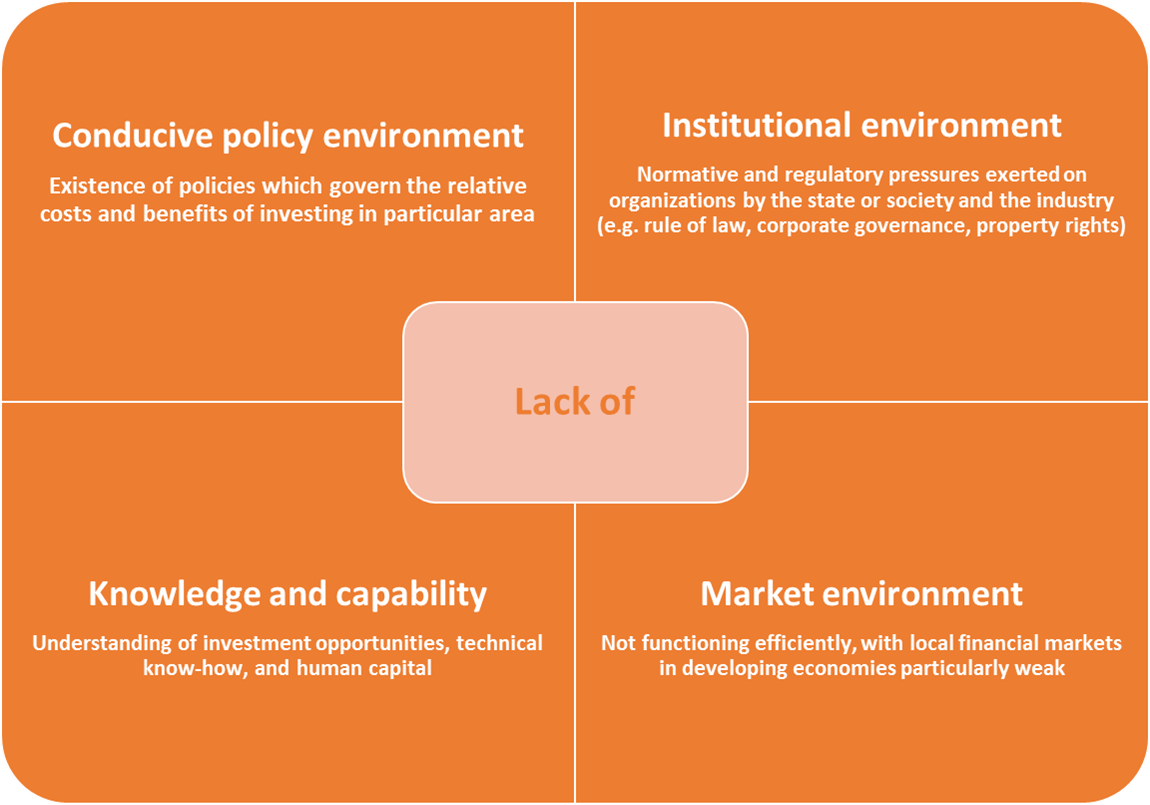Using blended finance to overcome barriers to climate investments
Using blended finance to overcome barriers to climate investments
Virginie Fayolle and Serena Odianose of Acclimatise, with Dario Abramskiehn of the Climate Policy Initiative (CPI), say the time has come for developing country governments to craft ‘blended finance’ for climate change-related investments. This is the first of a two-part blog; read the second part here.
Blended finance has been a buzzword in development circles for some time, but in recent years it has also become a prominent focus of international climate finance. By blended climate finance, we refer to the strategic use of a mix of philanthropic and development finance to appropriately apportion risks so as to make climate compatible development projects more financially viable. This may include the use of a combination of public and private investment, and/or of different types of financing.
A recent report by Climate Policy Initiative (CPI) for the UNFCCC’s Biennial Assessment and Overview of Climate Finance Flows has shown that while public finance continues to drive private investment and grew steadily to an average of USD 151 billion in 2014, private investment continues to form the majority of climate-relevant investment reaching USD 241 billion in 2014. In the context of constrained public budgets, significant additional private sector finance will be required to put developing countries on low-carbon, climate-resilient development pathways.
Governments alone will not be able to finance the massive costs of addressing the adverse impacts of climate change. By some estimates developing countries need around US$ 349 billion a year[1] to implement their INDCs. It should be noted that the INDCs collectively fail to limit average global warming to 2°C - in fact they overshoot 2°C by a significant amount. A further US$ 3.5 trillion is needed over the same period to bring levels of investment in line with ensuring the global increase in temperature doesn’t exceed 2°C. Today, there are a variety of public, private, bilateral, and multilateral sources that offer developing countries new opportunities to address their climate and development needs. The increase in climate finance opportunities makes it important for countries to consider how to attract and leverage different types of climate change investment, including from private sources.
The Government of Peru and CDKN hosted a four-day South-South learning exchange event in Lima in June 2016 that brought together decision-makers from Bangladesh, Colombia, Ethiopia, Pakistan, Peru and Rwanda. Through peer-to-peer learning in a collaborative environment, leaders shared their experiences and emerging practices for developing climate change projects that can attract funding.
An important message emerged from the workshop about the role of a blended approach to funding and financially engineering climate compatible development projects. In the case of private sector organisations, this is already business as usual. For government partners this still presents a challenge and an opportunity to learn more.
Blended climate finance – why is this an opportunity for governments?
Blended finance offers the opportunity to scale up commercial financing for developing countries and to channel this financing toward investments with climate impacts. This can be done by incorporating different types of financing into a single project or fund (e.g. grants; concessional and market-rate debt; equity investment; and risk mitigation instruments such as insurance or guarantees) in order to allocate individual risks to the parties that are best equipped to manage them.
Deploying capital in emerging and frontier markets can be an attractive source of returns and portfolio diversification for private sector capital providers. However, private sector actors also have varying thresholds of risk tolerance in emerging markets, and may be seeking different levels of returns. Financing climate-related projects gives rise to a set of risks, both real and perceived, that act as barriers to private sector investment (see Figure 1 below). It should be noted that most of these barriers are common challenges to private investment in developing countries and not specific to climate-related investments, but may be exacerbated as result of the promotion of new climate technologies or innovations, the lack of awareness amongst businesses and governments about the potential climate-related risks and opportunities, as well as technical or capacity-based, financial, and policy or regulatory barriers hindering climate-related investments. Simply put, blended finance can allow parties to manage project risks more effectively and use limited public finance to catalyse private investment.
Two international public funds – the International Finance Corporation (IFC) and the Green Climate Fund (GCF) – have already been trialling blended finance approaches for climate projects. The Global Innovation Lab is a new organisation that pilots new climate finance mechanisms. The second part of our blog details key lessons learned from the IFC’s and GCF’s experiences so far, and what the Global Innovation Lab has to offer.
Figure 1: Potential contextual barriers encountered by the private sector in investing in climate-related activities in developing countries. Source: Adapted from Escalante et al. (2017 forthcoming) [2].
This is part one of a two part blog written by Virginie Fayolle, a Senior Economist who leads climate finance activities at Acclimatise, Serena Odianose, Policy researcher at Acclimatise and Dario Abramskiehn, Analyst at the Climate Policy Initiative (CPI). Read part two here.
Image: Kutch, Farming via Flickr
[1] This figure is an annual approximation based on the financial needs stated in the INDCs. In order to determine the required amount of international support, a further distinction of what is conditional and not conditional, as well as what can be financed domestically and what requires international climate finance would be needed. However, this information is not available as some submissions lack adequate information, clarity and coherence. Some countries have not specifically communicated an amount of financial investment needed and others indicated minimum numbers only.
[2] Escalante D., Abramskiehn D., Hallmeyer K., Brown J. (2017 forthcoming). “Assessing the Additionality of Climate Investments.” A CPI Report.

